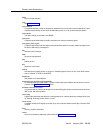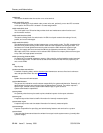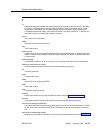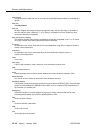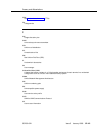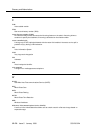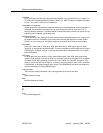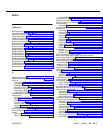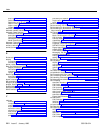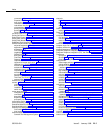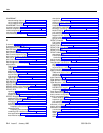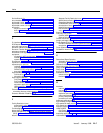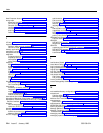
Glossary and Abbreviations
Issue 5 January 1998 GL-51555-230-024
wideband
A circuit-switched call at a data rate greater than 64 kbps. A circuit-switched call on a single T1 or
E1 facility with a bandwidth between 128 and 1536 (T1) or 1984 (E1) kbps in multiples of 64 kbps.
H0, H11, H12, and N x DS0 calls are wideband.
wideband access endpoint
Access endpoints, extended with wideband switching to include wideband access endpoints. A
wideband access endpoint consists of one or more contiguous DS0s on a line-side T1 or E1
facility and has an extension. The Administered Connections feature provides call control for calls
originating from wideband access endpoints.
wink-start tie trunk
A trunk with which, after making a connection with a distant switching system for an outgoing call,
the system waits for a momentary signal (wink) before sending the digits of the called number.
Similarly, on an incoming call, the system sends the wink signal when ready to receive digits.
work mode
One of four states (Auto-In, Manual-In, ACW, AUX-Work) that an ACD agent can be in. Upon
logging in, an agent enters AUX-Work mode. To become available to receive ACD calls, the agent
enters Auto-In or Manual-In mode. To do work associated with a completed ACD call, an agent
enters ACW mode.
work state
An ACD agent may be a member of up to three different splits. Each ACD agent continuously
exhibits a work state for every split of which it is a member. Valid work states are Avail, Unstaffed,
AUX-Work, ACW, ACD (answering an ACD call), ExtIn, ExtOut, and OtherSpl. An agent’s work
state for a particular split may change for a variety of reasons (example: when a call is answered
or abandoned, or the agent changes work modes). The BCMS feature monitors work states and
uses this information to provide BCMS reports.
write operation
The process of putting information onto a storage medium, such as a hard disk.
WSA
Waiting session accept
WSS
Wireless Subscriber System
Z
ZCS
Zero Code Suppression





